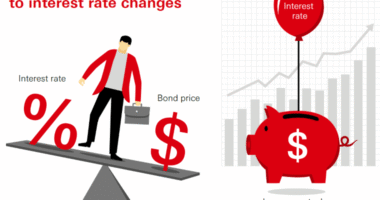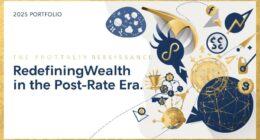Choosing the right financial advisor can be one of the most important decisions you make as an investor. But before hiring one, it’s essential to understand how financial advisor fees work. Many investors are surprised by the wide range of fee structures, hidden costs, and how these charges can affect long-term returns.
This complete guide explains financial advisor fees, the different models used, and the hidden costs investors should watch for in 2025 and beyond.
Why Understanding Financial Advisor Fees Matters
When you hire a financial advisor, you are not only paying for investment guidance but also for planning, retirement strategies, and wealth management. However, fees can significantly reduce net returns over time.
Even a 1% annual fee on a large portfolio can cost thousands of dollars per year. By understanding how these fees work, you can make smarter decisions and keep more of your money invested.
Common Types of Financial Advisor Fees
1. Percentage of Assets Under Management (AUM)
The most common fee model is based on a percentage of your assets under management.
-
Typical Range: 0.25% to 1% annually.
-
Example: If you have $500,000 managed by an advisor charging 1%, you’ll pay $5,000 per year.
-
Hidden Cost: Fees scale with your portfolio, meaning you pay more as your wealth grows, even if the advisor workload doesn’t increase.
2. Flat Annual or Retainer Fees
Some advisors charge a flat yearly fee regardless of portfolio size.
-
Typical Range: $2,000 to $10,000 annually.
-
Benefit: Predictable and transparent.
-
Hidden Cost: May be expensive for small portfolios, as you could pay a high flat fee relative to your assets.
3. Hourly Fees
Advisors may charge by the hour for specific services like retirement planning or estate planning.
-
Typical Range: $150 to $500 per hour.
-
Benefit: Good for investors who only need occasional advice.
-
Hidden Cost: Costs can add up quickly if multiple sessions are needed.
4. Commission-Based Fees
Some advisors earn commissions when you buy or sell financial products like mutual funds, insurance, or annuities.
-
Benefit: No upfront cost for advice.
-
Hidden Cost: Potential conflicts of interest—advisors may recommend products that pay them higher commissions instead of what’s best for you.
5. Performance-Based Fees
A smaller group of advisors charge fees tied to the investment performance of your portfolio.
-
Example: An advisor might take 20% of profits above a benchmark return.
-
Hidden Cost: Incentivizes risky strategies, as advisors may take big chances to boost their compensation.
Additional Hidden Costs to Watch For
Even if you know your advisor’s fee structure, there are extra costs that investors often overlook.
1. Fund Management Fees
When advisors recommend mutual funds or ETFs, these funds carry expense ratios (typically 0.05%–1.5%). These are not paid to the advisor directly but reduce your returns.
2. Trading Fees and Transaction Costs
Some brokerages charge fees for trades, though many have moved to commission-free models. Still, hidden spreads and transaction costs can eat into returns.
3. Custodian and Account Fees
Your account custodian may charge maintenance fees, transfer fees, or wire fees, which can add up annually.
4. Hidden Insurance and Annuity Charges
Insurance-linked investment products, like annuities, often come with surrender charges, mortality fees, and rider costs that are not always disclosed upfront.
5. Tax Implications
An advisor’s strategy may generate taxable events, such as frequent trading or poorly timed withdrawals, which increase your tax burden.
How Fees Affect Long-Term Investment Growth
Even small fees compound over time. Consider this example:
-
Portfolio: $250,000
-
Annual Return (before fees): 7%
-
Advisor Fee: 1% annually
After 20 years, the difference between paying 1% in fees vs. 0.25% can be over $100,000 in lost growth.
This shows why minimizing costs is critical for long-term wealth building.
How to Evaluate Your Advisor’s Fees
Ask the Right Questions
Before committing to an advisor, ask:
-
What is your exact fee structure?
-
Are there additional charges for financial planning, tax advice, or estate planning?
-
Do you receive commissions from the products you recommend?
-
What is my all-in cost including fund fees and custodial fees?
Compare Different Advisors
-
Fee-only advisors (fiduciaries) are often more transparent.
-
Commission-based advisors may have conflicts of interest.
-
Hybrid models can sometimes combine both approaches.
Ways to Reduce Financial Advisor Fees
1. Negotiate Fees
Many advisors are open to negotiation, especially for large portfolios.
2. Use Robo-Advisors
Robo-advisors typically charge 0.25% to 0.50% annually, far lower than human advisors.
3. Choose Low-Cost Funds
Opt for ETFs and index funds with lower expense ratios to reduce hidden costs.
4. Pay Only for Services You Need
If you just need retirement planning or tax strategies, consider hiring an advisor hourly rather than paying a flat percentage.
The Rise of Transparent Pricing in 2025
In 2025, the financial advisory industry is shifting toward greater transparency. Investors are demanding clear, upfront disclosures about fees and performance. Regulators in the US and Europe are also tightening rules on hidden commissions and conflict-of-interest practices.
This means investors have more power than ever to choose advisors who align with their goals.
Key Takeaways
-
Financial advisors charge in multiple ways: percentage of AUM, flat fees, hourly rates, commissions, or performance-based models.
-
Hidden costs—like fund expense ratios, trading fees, custodial fees, and tax implications—can reduce overall returns.
-
Over decades, even a small difference in fees can cost investors tens of thousands of dollars.
-
Investors should always ask for a full breakdown of all fees before committing to an advisor.
-
Negotiation, robo-advisors, and low-cost funds can help reduce overall costs.
Conclusion
Understanding financial advisor fees is essential for smart investing in 2025. While professional advice can be invaluable, hidden costs and high fees can eat away at long-term returns. By asking the right questions, comparing fee models, and choosing transparent advisors, investors can maximize wealth growth while minimizing unnecessary costs.
Being informed is the first step toward taking control of your financial future.









